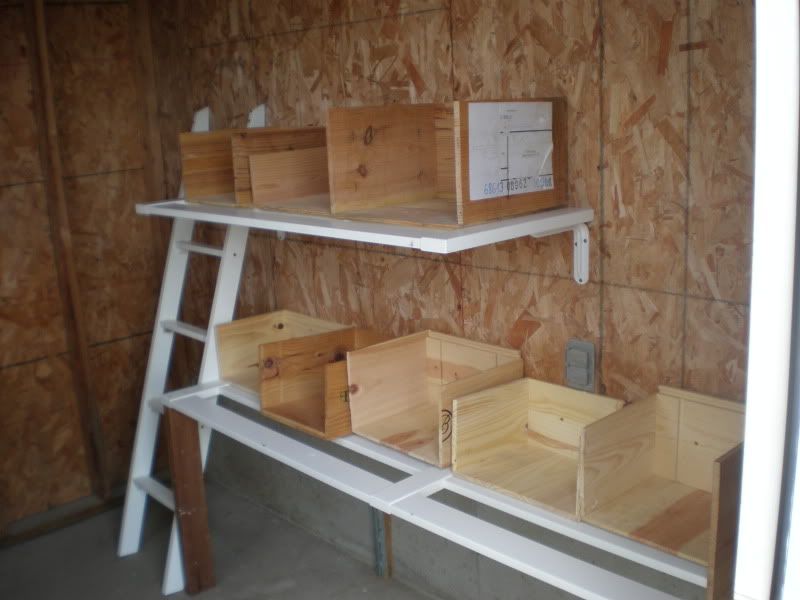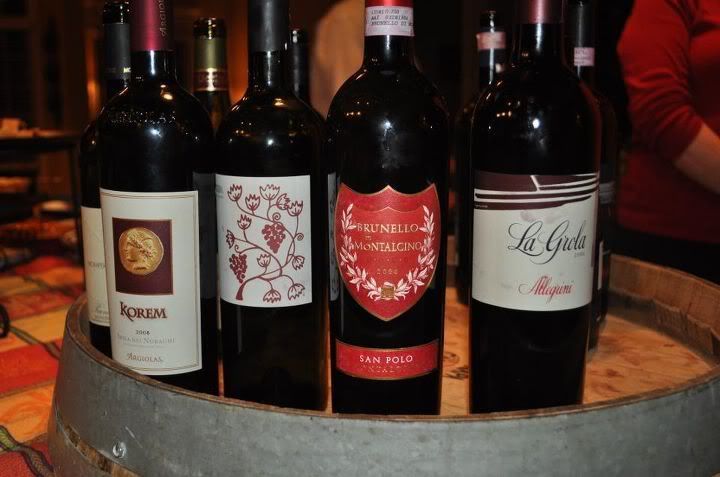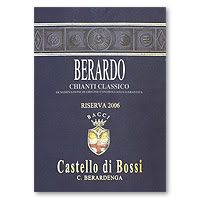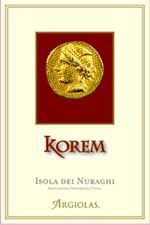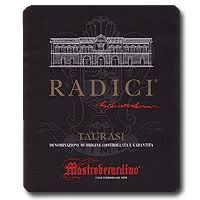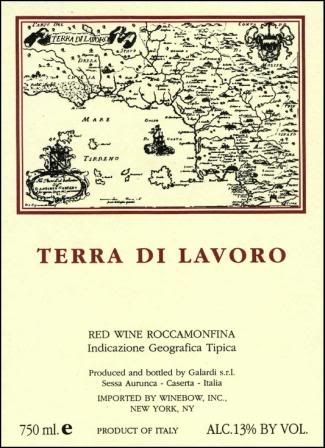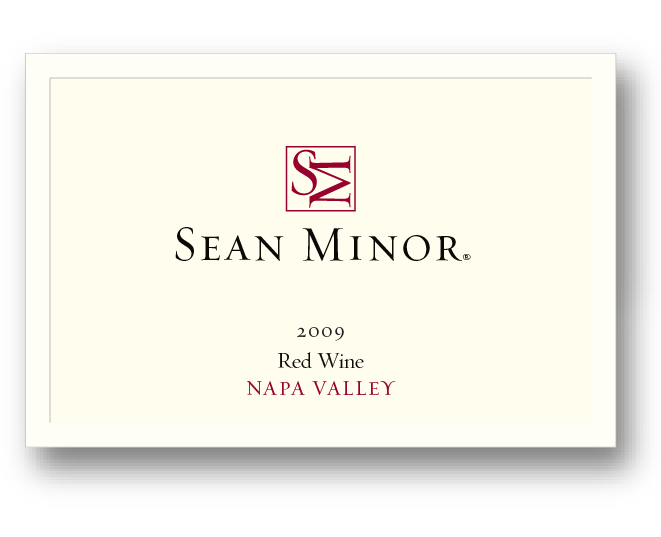We're planning on processing our turkeys, ducks and all but one of our roosters this weekend. The three turkeys are the right size for butchering and our excess of roosters is fostering a lot of disharmony in the flock. So we're taking them across the street to our neighbors who are also processing a lot of their birds this weekend. Probably a good thing that we're getting rid of the turkeys this weekend because I'm afraid of getting any more attached to them. Just look at this guy! How cool is he?
That's our male caramel/white runner duck in the foreground and the female mottled duck in the background. They're going away this weekend, too. They're cute, but pretty useless as farm animals. Mottled ducks aren't particularly prolific egg layers. All they're really doing is eating food and turning the turkey/duck pen into a muddy mess. Ideally, we're going to make a home made turducken for Christmas!
And I'm putting up a few pictures of the chickens. When we bought the house there were two dog kennels attached to the back of one of the garages. A few weeks ago I tore down the wall separating the kennels and made the area into one large chicken coop.
Here's what it looked like when I turned one of the kennels into a coop for our initial flock:
And here it is now:
Here are some of the older hens and roosters hanging out in the yard on this chilly, gray morning. You can see the coop in the background:
As of Sunday, we'll end up with 1 Buff Orpington hen, 4 Barred Plymouth Rock hens, 3 Black Australorp hens, 2 Production Red hens, 6 Buff Orpington/Black Australorp cross hens and 1 Buff Orpington rooster. We're currently getting 9-10 eggs per day with a couple of those being the smaller pullet eggs from the Production Reds. Any day now the Buff/Australorp crosses should start laying pullet eggs. And a month from now we'll probably be getting 15-16 eggs per day!
The beautiful Buff Orpington/Black Australorp crosses:
These are all chickens that we hatched here at the farm and slowly integrated into the larger flock. I'm not sure how the genetics work, but half of them have dark heads and the other half have buff-colored heads. All have the same Buff Orpington dad but they come from 3 different Black Australorp hens. They're really pretty with variegated black/buff feathers and quite gentle; if still a bit skittish. I think they'll be a little more friendly once they are no longer being terrorized by 6-7 randy young roosters all day long!
The goats are still doing well. No new pictures of them as they really haven't changed much other than the fact that they've grown some. They're still hanging out eating hay and nibbling on weeds all day.
And the garden is doing well, too. Last week's cold snap seems to have stymied the tomatoes' ripening, but we've got hundreds of green ones just waiting around for the warm weather to return next week. Still getting cucumbers. The bell peppers are getting larger and starting to ripen into gorgeous orange and purple hues. Picked a bunch of jalapenos last week and pickled them. And, of course, we're still getting all the fresh basil, rosemary, thyme, chives and oregano we can consume.
Last week my wife planted second crops of carrots, green beans, beets and arugula. Some of those are already starting to sprout.
Thursday, September 15, 2011
Wednesday, September 14, 2011
2006 Lindaflor "Petit Fleur"
This is the third (and final) time I've had the 2006 Lindaflor Petit Fleur, Mendoza in the last 14 months or so and unfortunately it seems to be getting worse and worse. The wine is a blend of unspecified amounts of Malbec, Merlot, Syrah and Cabernet Sauvignon.
My note from July of 2010 says "Fantastic color, blueberry, blackberry, coffee grounds and black pepper. Hint of cured meat/salami. Loads of dark fruits and spice on the palate. Big tannins and acidity."
Fast forward to February of this year and I get "Cotes du Rhone, black pepper, raspberry, spice, herb and coffee. Sweet and fat with chocolate, coffee and raspberry. Slightly medicinal, meaty aromas and alcohol have subsided, atypical."
Tonight the wine is just a goopy, syrupy mess of stewed fruit and cough syrup that doesn't speak of Argentina or Malbec. The color is still a dark, vibrant ruby but I'm not longer noting any of the dark fruits, spice or coffee from previous bottles. There's a decided element of herbal cough syrup/Jagermeister going on in the glass and the palate has lost all definition. The finish is still decently long, but long here doesn't equal profound - or even pleasurable. Good enough pairing with tonight's delicious Cajun-spiced rotisserie chicken, but really falls apart one the food is gone. I guess I have to admit my initial "drink now or hold for 5 years" advice was pretty far off base. If you have any of this, I'd recommend drinking it now. About $20.
Monday, September 12, 2011
Platinum Italian Wine Tasting
I was treated to a tour de force (apologies to a certain Monktown lawyer) of high end Italian wines last Thursday, Sept 8. The wines were graciously donated by Chris Tridle, Import Regional Manager of Winebow and Jeff Miller, Jr., Sales Division Manager at Glazer's Wholesale.
The first wine of the evening was an "unofficial" pour that Chris and Jeff had left over from the day's sales calls. The 2010 Botromagno Poggio al Bosco, Gravina was a beautiful blend of Malvasia and Greco that showed powerful yeasty/smoky and dry pear aromas on the nose and rich, melon flavors on the palate. Reminds me of a really nice domestic Pinot Gris. Price unknown.
After the so-called "bonus pour" was finished off we moved on to the 2009 Zenato Lugana, San Benedetto DOC. Crisp and clean, this straw-colored wine was packed full of peachy orchard fruit on the nose and palate with zippy acidity. 100% Trebbiano and very tasty for a mere $15. Should be quite nice as an aperitif or with lighter food.
The 2007 Prunotto Mompertone, Piedmont was the first red of the evening. This blend of 60% Barbera and 40% Syrah starts off rather grapey and primal but opens up to reveal layers of plum, violets and spice. Barrique aging comes across in the coffee aroma and flavor. Quite smooth and ready to drink now for $25.
Next up was the 2007 Poggio al Tesoro Mediterra, IGT Toscana. hailing from the Bolgheri sub-region of Tuscany, the Mediterra is warm and slightly alcoholic with sweet/tart red berries and a long, dry, tannic finish. I have to say this was probably my least favorite wine of the evening. Just seemed a little bit thin and restrained. $25.
Switching gears, we next moved to the northeast corner of Italy with the 2006 Allegrini La Grola, Veneto. A single vineyard blend of Corvina, Rondinella, Syrah and Sangiovese, this wine was among my favorites. Deep redfruit compote, hickory/campfire notes, tobacco and coffee are all present in this one. Aged 16 months in French oak. Note: Replace the Syrah and Sangiovese with Molinara and this wine would qualify under italian law to be labeled as Ripasso as it is re-fermented over the dried and pressed skins from Allegrini's Amarone. Another winner at $25.
The 2006 Castello di Bossi Berardo, Chianti Classico Riserva DOCG is one of the best Chiantis I have had in recent memory. This rich, voluptuous Sangiovese offers notes of sweet blackberry, violets and smoke. Beautifully crafted in the international style with lower acidity and moderate tannins. Very reasonably priced at $35.
Sangiovese's larger cousin is the Sangiovese Grosso clone used to make the 2004 Poggio San Polo Brunello di Montalcino DOCG. Displays the traditional brow hue (from which the term Brunello is derived) and aromas of violets and anise that one expects from Brunello di Montalcino. Also shows a lot of barnyard, hickory, mushroom and coffee. Firm acidity and big tannins suggest this one could last a long, long time in the cellar but the lack of fruit is a slight concern. About $80.
I think perhaps the most interesting, exotic wine of the evening was the 2008 Argiolas Korem, IGT Isola dei Nuraghi. Primarily made from the Bovale Sardo grape (something I have no experience with) I tasted this one with no preconceived notions. What I got was wave upon wave of raspberry, vanilla, menthol (later turns to peppermint) and herbaceous wild berries. Lean and smoky with mouthwatering acidity, I really want to try this with some braised shanks. Kudos to Argiolas for sticking with native Sardinian grape varieties. A fascinating $48.
Another grape that I am not terribly familiar with, Aglianico, served as the base for the next two wines I enjoyed. The 2006 Mastroberardino Radici, Taurasi DOCG is done unapologetically in the international style with blueberries, blackberries, maraschino cherry, flowers and tar on the nose and palate. Quite tannic, yet remarkably accessible. Aged two years in barrique. Drink now or hold. A bit pricey at $58.
The 2008 Fattori Galardi Terra di Lavoro, IGT Roccamonfina is a stunning wine with Port-like concentration. Deep purple in color with black olive, smoke, tobacco and graphite notes this was the perfect counterpoint to the fruit bomb Radici. I suspect this wine will last practically forever when cellared under the proper conditions. If I were in the market for $85 wines, I would certainly take a chance on laying down a few of these Aglianico/Piedirosso blends.
The final wine of the evening was the full-bodied 2008 Azienda Agricola Montrevetrano, IGT Colli Salerno. A blend of 60% Cabernet, 30% Merlot and 10% Aglianico, the wine is pretty typical (at least in my experience) of a Bordeaux blend from Italy. Black currant, tobacco, vanilla and licorice are all present, but there seems to be a sense of green/unripeness pervading the wine. Finish turns quite leathery and tannic. $78.
My goodness! What an amazing array of wines representing nearly every major winemaking region of Italy. I definitely want to pick up some Lugana and Allegrini La Grola and might even spring for a couple of the the Argiolas Korem. Big thanks to Chris and Jeff for their generosity with both their time and their wines!
Friday, September 9, 2011
2009 Sean Minor Red Wine
Being the unapologetic Sean Minor fan that I am, you can imagine my excitement at seeing the LDF driver drop off two cases of the 2009 Sean Minor Red Wine, Napa Valley at the store this afternoon. I've been waiting for this to hit Kansas for a few months now and I just had to buy a bottle to taste this evening. This is a fascinating blend of 30% Merlot, 23% Petit Verdot, 17% Zinfandel, 16% Petite Sirah, 10% Syrah and 4% Malbec. The color is fabulous. The nose reveals layers of blue and black fruits, spice, hickory smoke and, to a lesser degree, licorice and green tobacco. Wonderfully balanced on the palate with the aforementioned blue and black fruits getting a boost from a graphite/iron-like quality that I assume stems from the disproportionately large amount of Petit Verdot in the blend. Medium-full bodied with nice tannins that don't really clamp down until the finish. My only knock on this wine is a strange metallic flavor that creeps in on the finish. But overall, a very impressive package that retails in the $20 range.
Tuesday, September 6, 2011
2007 Manos Negras Malbec
I don't have a whole lot to say about the 2007 Vino del Sol Manos Negras Malbec, Mendoza other than the fact that it is another in a long line of well-made, tasty, affordable Argentinian Malbecs. Nice color. Quite smoky for a Malbec (more on that later) with deep red and black fruits on the nose and palate. Medium-bodied with fruit, acid and tannin all nicely balanced. Turns a bit chocolaty on the finish. Like I said, nothing really jumps out here and screams "spectacular," but it's a perfectly satisfying wine that checks in around $15.
Last night's dinner was smoked/braised beef short ribs which I purchased from a local butcher shop (I'm being generous with the term "local" as Bichelmeyer's is damn near an hour from my house). I've been braising short ribs in the osso bucco style for 20 years now, but it wasn't until last year that I was introduced to the idea of lightly smoking them (this time over apple and hickory wood and pecan shells) before simmering them until fall-off-the-bone tender. Tip of the cap to Chef Renee Kelly for the inspiration. I braised them in onions, celery, carrots, garlic, red wine and home made chicken stock for 5-6 hours. The fork-tender beef was served over a mound of Yukon gold potatoes which were smashed with butter, buttermilk, fresh chives and a drizzle of porcini-infused olive oil. The smokiness of the wine really worked well with the meat. As I was standing in the cellar last night I was waffling between the Manos Negras a 2007 Dunning Syrah and I'm really glad I went with the Malbec.
Last night's dinner was smoked/braised beef short ribs which I purchased from a local butcher shop (I'm being generous with the term "local" as Bichelmeyer's is damn near an hour from my house). I've been braising short ribs in the osso bucco style for 20 years now, but it wasn't until last year that I was introduced to the idea of lightly smoking them (this time over apple and hickory wood and pecan shells) before simmering them until fall-off-the-bone tender. Tip of the cap to Chef Renee Kelly for the inspiration. I braised them in onions, celery, carrots, garlic, red wine and home made chicken stock for 5-6 hours. The fork-tender beef was served over a mound of Yukon gold potatoes which were smashed with butter, buttermilk, fresh chives and a drizzle of porcini-infused olive oil. The smokiness of the wine really worked well with the meat. As I was standing in the cellar last night I was waffling between the Manos Negras a 2007 Dunning Syrah and I'm really glad I went with the Malbec.
Saturday, September 3, 2011
2009 Red Heads Studio "Yard Dog Red"
For some reason I've always had a thing for Petit Verdot. The first Petit Verdot-heavy blend I ever tasted (a mid-90s vintage of von Strasser Reserve) intrigued me and I've been seeking out wines featuring this grape ever since. While any red wine fan on the planet is familiar with Cabernet Sauvignon, Merlot, Cabernet Franc and Malbec, Petit Verdot is treated like an outcast. Anything more than 5% or so in a Bordeaux blend is pretty rare. And varietal bottlings (Heller and Jekel make pretty darn good ones) are as elusive as a fashionable mullet.
So when I saw the blend on the back label of the 2009 Red Heads Studio Yard Dog Red, South Eastern Australia, I just had to try a bottle. And I was not disappointed. This blend of 60% Petit Verdot, 20% Cabernet Sauvignon and 20% Merlot has a rich garnet color, but none of that freakish opacity that sucks the color out of the room. The nose is a beautiful combination of cherry compote and spiced cranberries reminiscent of a Thanksgiving table. Is there a bit of tar in there, too? No hint of oak on this one. The other thing missing from this wine is the floral/violet that so many people associate with this grape. Oh, well. What's in there is pretty enough for me to overlook the AWOL flowers. The palate shows lots of sweet/tart cranberry and cherry flavors backed by moderate tannins and a solid core of graphite/mineral that I look for from Petit Verdot. Long, sweet/tart finish adds a final note of bitter cocoa. All in all, a very pleasant wine and way more complex than a $10 wine should be.
And a side note: I'd like to think I'm above being influenced by wine labels, but this one is really fun. It's got a mangy-looking dog with muddy paws baring his fangs looking like he's up to no-good. Apparently, this was an intentional jab at the Australian winemakers consumed with cutesy labels featuring cartoonish kangaroos and koala bears. Well done!
Just in case you missed it the first time around, here's a link to my review of the excellent Yard Dog White blend from a few months back.
So when I saw the blend on the back label of the 2009 Red Heads Studio Yard Dog Red, South Eastern Australia, I just had to try a bottle. And I was not disappointed. This blend of 60% Petit Verdot, 20% Cabernet Sauvignon and 20% Merlot has a rich garnet color, but none of that freakish opacity that sucks the color out of the room. The nose is a beautiful combination of cherry compote and spiced cranberries reminiscent of a Thanksgiving table. Is there a bit of tar in there, too? No hint of oak on this one. The other thing missing from this wine is the floral/violet that so many people associate with this grape. Oh, well. What's in there is pretty enough for me to overlook the AWOL flowers. The palate shows lots of sweet/tart cranberry and cherry flavors backed by moderate tannins and a solid core of graphite/mineral that I look for from Petit Verdot. Long, sweet/tart finish adds a final note of bitter cocoa. All in all, a very pleasant wine and way more complex than a $10 wine should be.
And a side note: I'd like to think I'm above being influenced by wine labels, but this one is really fun. It's got a mangy-looking dog with muddy paws baring his fangs looking like he's up to no-good. Apparently, this was an intentional jab at the Australian winemakers consumed with cutesy labels featuring cartoonish kangaroos and koala bears. Well done!
Just in case you missed it the first time around, here's a link to my review of the excellent Yard Dog White blend from a few months back.
Thursday, September 1, 2011
#2008 Dunning Cabernet Sauvignon
I thought I'd open a Cabernet tonight to celebrate the second annual #CabernetDay To be honest, I'm not sure how that whole "hash tag" thing works but the info said to include that in your post so it could be found easier by people doing internet searches. Is this some kind of Twitter thing? Anyway.......
2008 Dunning Vineyards Cabernet Sauvignon, Paso Robles - Frankly, a bit disappointing. Nice, deep color that I've come to expect from this winery. Seems to lack a bit of richness in the nose. Rather than the blackberry and dark cherry of previous vintages, this one smells more of unripened raspberries. The licorice and new French oak are there on the nose and palate, but so are the green tobacco and tart fruit. The 14.2% alcohol isn't out of line for this winery's offerings. The finish is long and dusty.
From most reports, 2008 was a below average year for Bordeaux varietals in Paso Robles. The Tablas Creek website claims a heat spike forced grape growers to pick before they wanted to. This, of course, could account for the tart fruit and generally unripe characteristics of this wine. I'm keeping my fingers crossed that my other three bottles somehow show a little better than this one did.
Subscribe to:
Posts (Atom)

